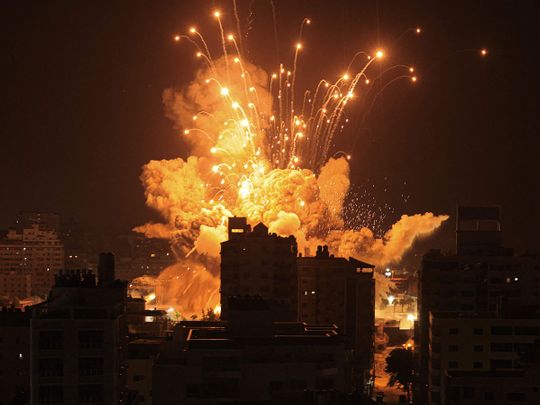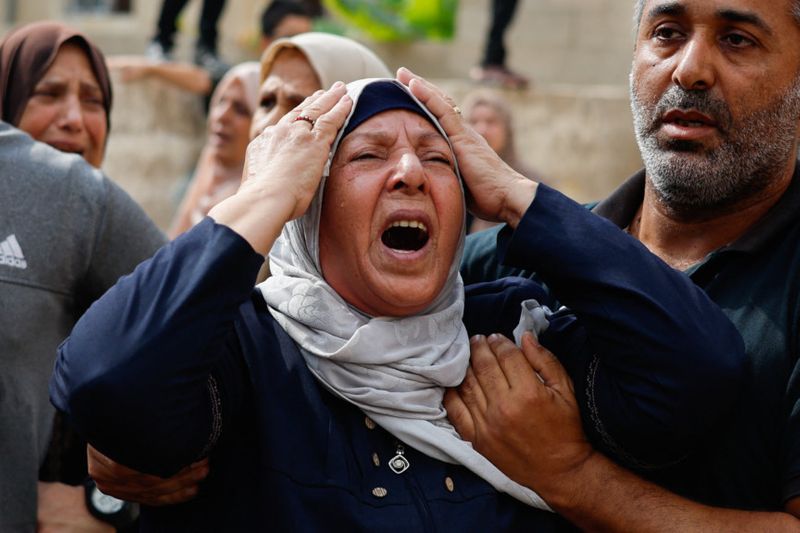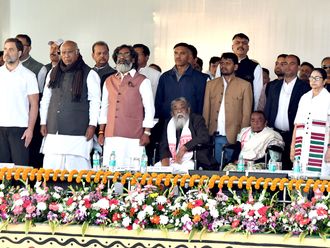
The blood-soaked Israel-Gaza conflict, which began over the weekend and continues, as we speak, to dominate the headlines, may appear at first blush to be one strictly between Gaza and Israel, but look deeper into its roots and you will find it to be, at its core, a 75-year-old, yet unresolved dispute between the peoples of Palestine and Israel.
But first, the carnage.
As I write this on Tuesday morning, my time here in Washington, more than 900 Israelis were reported dead and 2,600 injured. In Gaza, roughly 800 were killed and 4,000 injured — and still counting.
It was dreadful (and in my view sickening) to learn that in their assault across the border into Israel, Hamas militants chose to target young, unarmed Israeli civilians at a music festival, where they reportedly massacred (I find no other word that would do here) well over 200 concertgoers and then from there went on to take and drag into Gaza between 100 and 150 hostages, among them women, children and the elderly.
Welter of misery
Equally dreadful and sickening was Israel’s decision to mount, in like manner, a campaign of indiscriminate air strikes against civilian targets like high rise residential buildings, mosques and marketplaces in Gaza, a 140-square-mile welter of misery, an exclave that packs a population of 2.4 million, where people, with no access to bomb shelters, literally have no place to go when the missiles begin to fall.
Your guess is as good as mine as to how long the mayhem will last (“this is the start of it”, said Israel’s prime minister), how irremediable the suffering will be that Gazan civilians are expected to endure and where it will all lead at the end of the day.
Right to have rights
What we are witnessing today is not, in reality, a war but another battle in a war of many battles between an occupied people and their occupiers, like the two intifadas of 1987 and 2000 and the Great March of the Return, the series of demonstrations held every Friday near the Gaza-Israel border from March 30, 2018 till Dec. 27, 2019, all costly battles indeed, all different in kind and in degree but all the same in aspiration — ending the occupation.
This is a war waged by a people who simply refuse to continue living, as they have done for well over half a century, with a boot over their collective neck, continue seeing their humanity progressively reduced to a fragment and continue watching helplessly as their land is stolen from right under their feet, all the while shorn not only of their human right to determine their own political destiny but even of their right to determine how they live their daily lives. In short, a people shorn, in Hannah Arendt’s words, of the “right to have rights”.
Take the sustained campaign to rob Palestinians of their land in violation of every conceivable international law under the sun.

Cutting down human beings
Look, when you rob a predominantly agricultural people of land they had tilled for centuries and on which they had depended for their survival — land with which they had developed an unbreakable archetypal nexus — you rob them of more than material property. You rob them of acre and sanctuary, leaving them with wounds unhealed and a broken spirit unmended.
It is common in peasant folk rhetoric to speak of “ardi-a’ardi”, a complex, elusive phrase that translates roughly as “In my land lies my human nobility”. Rob people like that of their land and you rob them of their raison d’etre, a moment when life becomes worthless, when, as Austrian-British philosopher Karl Popper suggested in his iconic book, The Poverty of Historicism (1957), men don’t mind going on missions in pursuit of causes that they know they will not be around to see triumphant.
Then take Israel’s exceedingly absurd policy of “mowing the grass”, a metaphor implying that Palestinians under occupation need to be cut back like grass every now and again, with the expectation that in time they will be drained of their motivation to resist — a policy that ignores the fact that that you can cut back grass but you can’t cut down human beings.
The long and short of it is this: You cannot brutalise a people, as Israel has done all these long years, by subjugating them to the rule of the gun, without expecting them to respond brutally.

Descendants of refugees
Oh, yes, the carnage.
Do let’s go beyond it and reflect here on the irony of ironies found in the ongoing strife between Israel and Gaza, a strip of land more than half of whose population is made up of refugees, or the descendants of refugees, who in 1948 had sought refuge there after fleeing towns and villages in what was then southern Palestine but is now southern Israel — the very territory that Hamas militants stormed over the weekend.
In an allusion to that fact in his Washington Post “Worldview” column on Tuesday, political analyst Ishaan Tharoor resurrected an incident from the history books, one where in 1956 an Israeli soldier, one Roi Rotberg, was gunned down by Palestinian militants while he patrolled the Gaza-Israel border.
During an oration at Rotberg’s funeral, we are told in the column, Moshe Dayan (d. 1981), then Israel’s Chief of Staff, was blunt about what motivated those who killed the soldier. “Let us not blame the murderers”, he said.
“Why should we complain of their hatred for us? Eight years have they sat in the refugee camps of Gaza and seen, with their own eyes, how we have made a homeland of the soil and the villages where they and their forebears once dwelt”.
Now it’s 75 years since they’ve sat there.
— Fawaz Turki is a noted academic, journalist and author based in the US. He is the author of The Disinherited: Journal of a Palestinian Exile.






_resources1_16a45059ca3_small.jpg)

